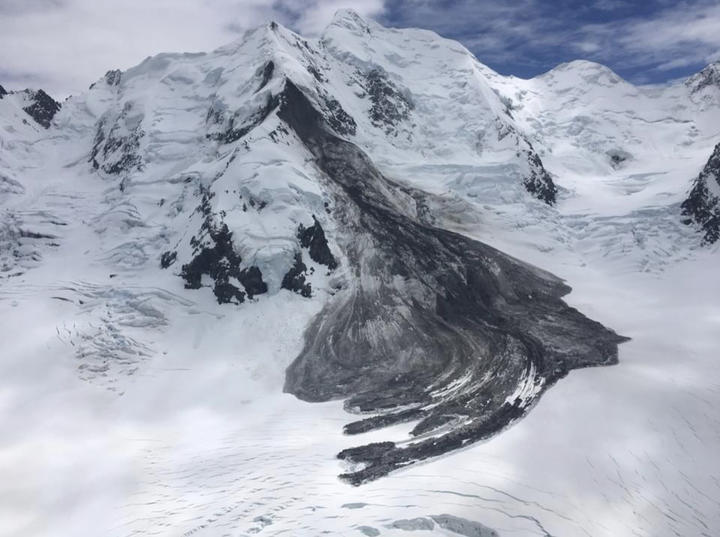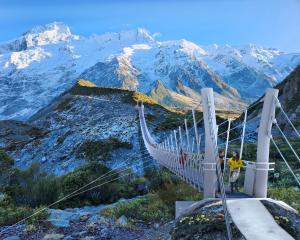
More than 50cm of new snow has fallen since last Sunday.
The Avalanche Advisory has downgraded its warning level from very dangerous to heightened conditions for all terrain until this afternoon.
Mountain Safety Council chief executive Mike Daisley said a moderate risk was reasonably high for this time of the year.
‘‘... just because it’s nice and sunny doesn’t mean the risk isn’t there.
‘‘What we are seeing up higher on the mountain is loose, wet avalanches, it’s like when you have snow on your roof then the sun comes up and it loosens it and a big chunk comes down in one big piece.’’
Climbers needed to keep a close eye on the avalanche forecast, Mr Daisley said.
There was little to no risk for day walkers on the Hooker Valley Track in the valley below.
There had been two major rockfalls in the past two weeks, one the size of a rugby field.
No-one was around when they happened, but they were in climbing areas.
‘‘It’s impossible to predict rockfall... .and the problem is we will continue to see this happen as more snow and ice recedes each year,’’ Mr Daisley said.
Global warming was cause ice and snow to recede further each year, ‘‘exposing rock that hasn’t been exposed in a very long time’’, he said.
‘‘The ice and snow has been holding the rock together, so as it’s loosened by the heat from the sun we are seeing a lot of rockfall.’’












